Recently, a reader wrote to us about finding “two very strange creatures in soil in my garden near San Diego.” The creatures are “very strange” because they are fairly long – about four to six inches (or 10 to 15 centimeters, roughly) in length – and, perhaps more notably, both were a vivid silver, like mercury (the element, not the planet; hence the lowercase “m”). They also have a thin black strip that runs down the lengths of their bodies. When our reader unearthed them from the garden soil, they “thrash[ed] around.” In contrast to many emails we receive, the reader didn’t speculate that he found some sort of worm; rather, he thought at first that he had found two snakes, but quickly decided this wasn’t the case because the creatures didn’t appear to have heads. (Presumably, the creatures did have heads, but they weren’t readily discernible from the rest of the body.) And so the question of course is: what are these long silver creatures that our reader found?
This is a perplexing question, and no creatures in particular come to mind on the basis of our reader’s description. We are fairly sure that our reader is right in assuming that he didn’t find snakes. For one, the creatures he found would be very small for snakes (although small snakes do exist), and in any case snakes definitely have heads that are noticeable. Skinks can look like snakes, and their heads can be hard to see depending on the angle from which you observe them. However, skinks very often look more like lizards than snakes (because they are lizards), so we think it is unlikely that our reader saw a skink. We also don’t think he came across any worm, even though he found these creatures digging around in the soil of his garden (a very likely place to find a worm). The most likely type of worm one finds in his garden is an earthworm, and earthworms do not match the reader’s description of the creature he found at all.
This leaves three additional possibilities: caterpillars, centipedes, and millipedes. Caterpillars are known for their colorful appearance, which is why we threw these creatures into the mix. For example, the caterpillars that grow into polyphemus moths are bright green with silver spots. We’re not suggesting this is what our reader saw, but it demonstrates just how wild the color schemes of caterpillars can be. However, caterpillars tend to be smaller than four to six inches in length, and only a few species burrow into the soil, so we don’t think our reader found a caterpillar. So, we’re left with centipedes and millipedes – could our reader have found one of these creatures?
In a word, possibly. First, the size of the creatures mentioned by our reader matches that of centipedes and millipedes fairly well. Certain species of both creatures can get quite long, so it wouldn’t be very unusual to find a centipede or millipede that is around a half of a foot long. Moreover, the movements of the creatures that our reader found (recall that he found them thrashing around) is consistent with them being centipedes or millipedes. The segmented bodies of centipedes and millipedes allow them to curve, and when they are being dug out of the soil (a place, by the way, that you might find either creature), they could definitely whip their bodies around in a panic. Finally, centipedes and millipedes can be sliver (an example of the latter is the silver-gray millipede found in the Amazon), although we are not familiar with any particular silver species of either creature that lives in Southern California. If our reader did find millipedes or centipedes, it’s somewhat strange that he didn’t mention the many legs that both of these creatures have. On the other hand, some species have tiny legs, ones that you wouldn’t necessarily be able to see immediately unless the creature was on its back.
For good or ill, that is far as we are willing to go in our speculation. Of the creatures that our reader might have found in his garden, it seems most likely that he found either millipedes or centipedes. Since both are extremely similar, we cannot say if it is more likely that our reader found a centipede or a millipede. Both match the reader’s description equally well. Hopefully this article at least narrows the possible candidates for our reader’s creature. We don’t know what he found, but we at least know a few creatures that he likely didn’t find.
All About Worms is always free, always reader-supported. Your tips via CashApp, Venmo, or Paypal are appreciated! Receipts will come from ISIPP Publishing.



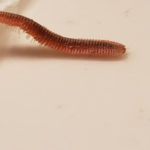
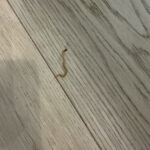
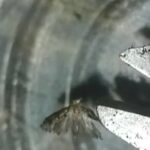
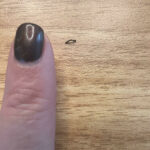
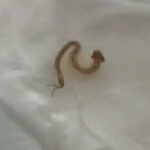
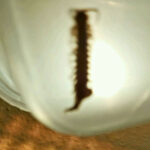
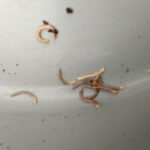
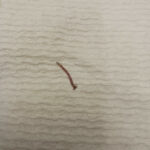

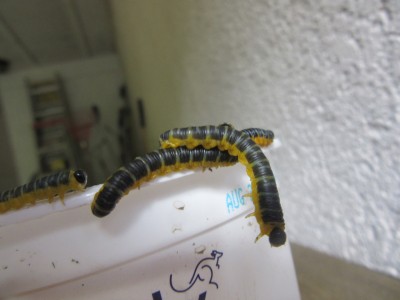
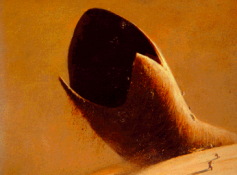



I am here some twelve years after this post. I have now seen a similar creature in my compost pile. Looks and moves like a worm. Silver, not just grey. 6 – 8 inches, very thin. I will keep looking, and ask around. I am in SW Florida, about the same zone as San Diego would be. If in the twelve years since this was first asked, you have figured out what this is, please I’d love to know!